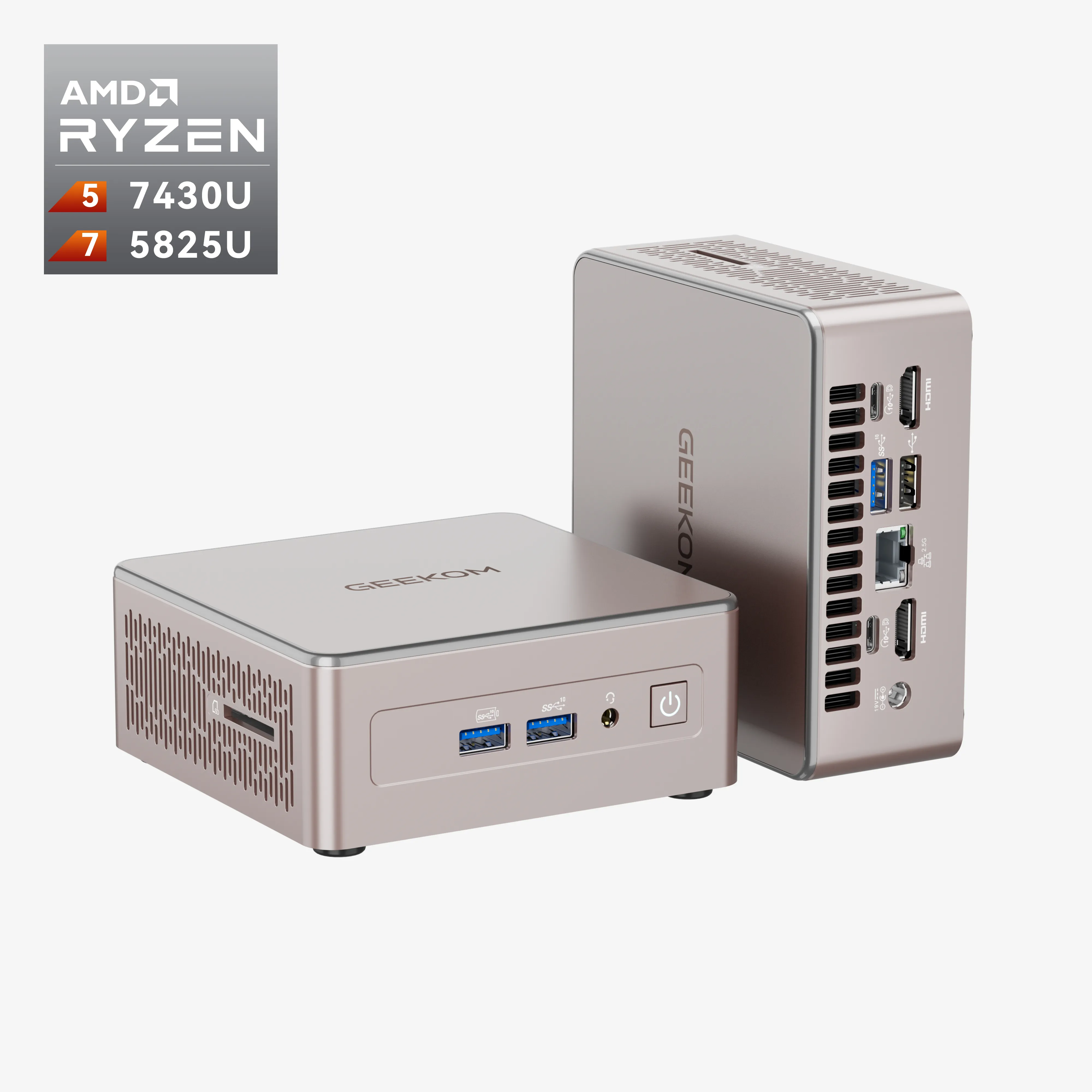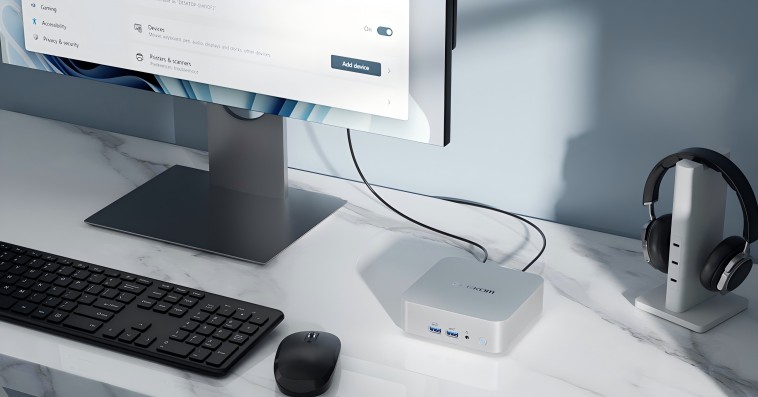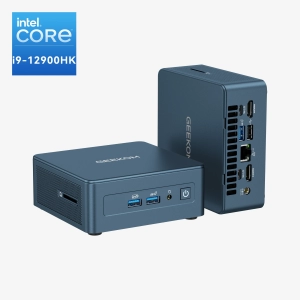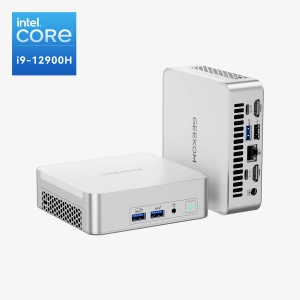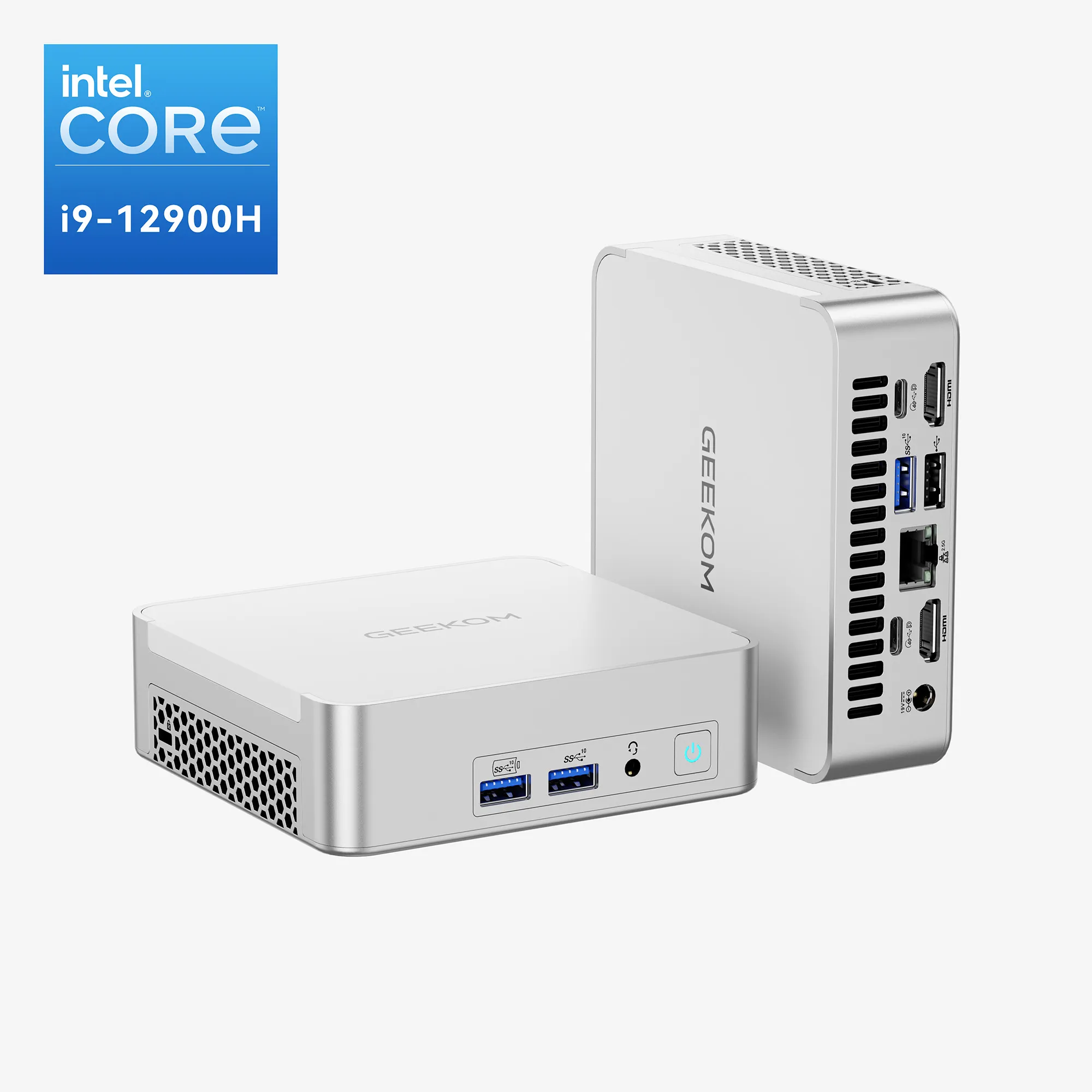If you’re building a high-performance PC and trying to decide between AMD’s Ryzen 9 7900X and Intel’s Core i9-13900K, you’re probably looking for serious power. These two processors are heavyweights, and both can handle pretty much anything you throw at them, from gaming to video editing to running demanding software. But they go about it in different ways, which makes choosing between them more interesting than just checking specs.
The Ryzen 9 7900X is all focused on multi-core power, targeted towards people who require raw horses-in-the-stable for 3D rendering, highly efficient content creation, or other multi-threaded tasks. In the other corner stands the i9-13900K from Intel featuring a mixed-core architecture, comprising performance cores for speed and efficiency cores for providing ports to multitask. So, the best of these three-way packages shall deliver on gaming performance, work productivity, and power efficiency.
In this comparison, the focus will not strictly be numbers. We will gauge a real-time performance test of each of those processors, depending on whether it is for top-notch gaming or heavy multitasking. Should your goals clearly crystallize by then, you can adopt whichever of the two complements your setup and your priorities better.
Architecture and Design: Ryzen 9 7900X vs Intel Core i9-13900K
The Ryzen 9 7900X is part of AMD’s Zen 4 lineup, built on a super-efficient 5nm process. AMD went all-in on packing this chip with 12 high-performance cores and 24 threads, focusing on raw multi-core performance. It’s designed to crush workloads like rendering, video editing, and anything that can take advantage of a lot of threads running at once. Plus, it supports DDR5 memory and PCIe 5.0, so you’re all set for the latest tech.
Meanwhile, the Core i9-13900K from Intel’s Raptor Lake family takes a different route with its hybrid architecture. The chip has eight P-cores and sixteen E-cores, making it a total of twenty-four cores and thirty-two threads. That division allows the i9 to execute heavy and light tasks in parallel. The hybrid architecture provides the best of both worlds: the P-cores carrying those requests for gaming and performance-hungry apps, and then the E-cores pulling off multitasking and efficiency.
Both CPUs support PCIe 5.0, but there’s a twist: the i9-13900K works with both DDR4 and DDR5 memory, while the Ryzen 9 7900X is DDR5-only. That flexibility gives Intel’s chip a bit of an edge if you’re upgrading from an older system and want to stick with your existing DDR4 RAM to save some cash.
Ryzen 9 7900X vs Intel Core i9-13900K: Specs
| Specification | AMD Ryzen 9 7900X | Intel Core i9-13900K |
| Cores | 12 | 24 (8 Performance, 16 Efficiency) |
| Threads | 24 | 32 |
| Base Clock | 4.7 GHz | 3.0 GHz (P-cores) / 2.2 GHz (E-cores) |
| Max Boost Clock | Up to 5.6 GHz | Up to 5.8 GHz (P-cores) / 4.3 GHz (E-cores) |
| L2 Cache | 12 MB | 32 MB |
| L3 Cache | 64 MB | 36 MB |
| Architecture | Zen 4 | Raptor Lake |
| Process Node | 5nm | Intel 7 (10nm equivalent) |
| Memory Support | DDR5 only | DDR4 and DDR5 |
| PCIe Version | PCIe 5.0 | PCIe 5.0 |
| TDP (Thermal Design Power) | 170W | 125W (base, higher under load) |
| Integrated Graphics | None | Intel UHD Graphics 770 |
| Socket | AM5 | LGA 1700 |
Core and Thread Count and Clock Speeds
With 12 high-performance cores and a 2-thread-per-core production, the Ryzen 9 7900X processor presents 24 threads in total. The basic tickling clock speed is 4.7 GHz, with turbo speed being as high as 5.6 GHz; this is for users who need performance across correlated cores. It would work for those tasks that require multi-threading, including 3D rendering, video editing, and any workload where each core is needed for strength.
Intel’s Core i9-13900K takes a different approach with a 24-core setup, comprising 8 Performance (P) cores and the remaining 16 Efficiency (E) cores. The P-cores are directed at heavy tasks, including gaming and complex computation, with base operating speeds of 3.0 GHz and a boost of 5.8 GHz, while E-cores will normally perform fine in terms of handling background tasks or light multitasking at lower base frequencies of 2.2 GHz and up to 4.3 GHz. In total, you get 32 threads, which means that the i9-13900K can easily handle very intensive multi-threading.
Power Efficiency and Thermal Management
| Specification | AMD Ryzen 9 7900X | Intel Core i9-13900K |
| TDP (Base) | 170W | 125W |
| Max Power Draw (PL2) | ~230W | ~250W+ |
| Idle Power Consumption | Lower (~50-60W) | Moderate (~60-70W) |
| Peak Power Usage | More consistent under load | Spikes higher under heavy tasks |
| Thermal Throttling Risk | Lower | Higher without robust cooling |
| Cooling Requirement | High-performance air or liquid | Requires high-end cooling solutions |
The Ryzen 9 7900X has a base TDP of 170W, which might seem high on paper, but in practice, AMD’s Zen 4 architecture ensures more consistent power consumption. This means that even under heavy workloads, the Ryzen processor tends to stay within a predictable range, avoiding the huge power spikes that can sometimes catch system builders off guard. Additionally, it’s more efficient during lighter tasks, which makes it suitable for people who need both peak performance and manageable power use for day-to-day work.
The Core i9-13900K, on the other hand, starts with a base TDP of 125W, but that number can be misleading. Thanks to its hybrid design and Intel’s aggressive power management, the CPU can pull over 250W under peak loads, especially when all P-cores and E-cores are active. While this allows it to push performance to the max, it also means higher heat output and a greater need for top-tier cooling solutions to avoid thermal throttling.
Cooling Considerations
The Ryzen 9 7900X will hold up under more strenuous workloads with high-performance air cooling or a 240mm AIO liquid cooler. The power consumption remains consistent across most workloads, which makes it easier to manage thermal performance without the need for ultra-high-end cooling systems.
For the Core i9-13900K, things are a bit more complicated. Due to its higher peak power draw, it’s strongly recommended to use at least a 280mm or 360mm AIO liquid cooler or high-end air cooling. The Intel chip can run hotter, especially if you’re overclocking or using it for heavy workloads like rendering or competitive gaming, which makes thermal throttling a real concern without proper cooling.
How Much Faster is the Ryzen 9 7900X than the Intel Core i9-13900K?
| Benchmark | Ryzen 9 7900X | Intel Core i9-13900K |
| Cinebench R23 (Multi-Core) | ~29,300 | ~39,650 |
| Cinebench R23 (Single-Core) | ~2,030 | ~2,240 |
| Geekbench 5 (Multi-Core) | ~21,760 | ~23,980 |
| Geekbench 5 (Single-Core) | ~2,220 | ~2,140 |
| 3DMark Time Spy CPU (RTX 3080) | ~14,630 | ~28,522 |
| PassMark (CPU Mark) | ~51,737 | ~59,037 |
With benchmarks highlighting its unique power across multi-core and single-core tasks, Intel’s Core i9-13900K outperforms Ryzen 9 7900X in almost all performance assessments. In Cinebench R23 Multi-Core, i9-13900K scores around 39,650, making a large decisive jump from the 29,300 seen with the 7900X.
This essentially comes from Intel’s hybrid core architecture pairing eight powerhouse performance cores with 16 efficiency cores, giving it good leverage, especially for multi-threaded workloads like 3D rendering, heavy video editing, and running multiple demanding applications side-by-side.
In single-core benchmarks like Cinebench R23 Single-Core, Intel keeps the lead with a score of ~2,240, while the 7900X trails at ~2,030. Although the gap isn’t huge, it does mean the i9-13900K is a bit better at gaming and other single-threaded tasks, where quick boosts in single-core speed make a difference.
Geekbench 5 follows a similar story: the i9-13900K scores ~23,980 in multi-core tests, compared to 21,760 from the Ryzen 9, which makes it ideal for power users who juggle multiple tasks or need maximum responsiveness. Surprisingly, the 7900X scores a touch higher in Geekbench 5’s single-core with ~2,220 compared to Intel’s ~2,140, showing AMD’s chip is still strong for specific single-core-dependent tasks.
3DMark Time Spy is another benchmark designed around CPU and GPU. With the 13900K scoring 28,522 and the 7900X scoring 14,630, Intel wins magnanimously here. The chip is therefore the better choice for gaming or graphic-heavy work, as it proves capable of running heavy workloads and fails to bottleneck GPU performance.
PassMark rounds out the comparisons with Intel at ~59,037 compared to AMD 51,737: showing i9-13900K has a slight edge among a lot more classes of mixed workloads; thus, even those users who want balanced performance for content creation, productivity, and light gaming will benefit from it.
Ryzen 9 7900X vs Intel Core i9-13900K: Which Is Good For Gaming?
Gaming Performance (FPS) – 1080p, High Settings
| Game | GPU Used | Ryzen 9 7900X (Average FPS) | Intel Core i9-13900K (Average FPS) |
| Cyberpunk 2077 | RTX 3080 | ~170 FPS | ~176 FPS |
| Shadow of the Tomb Raider | RTX 3080 | ~210 FPS | ~220 FPS |
| Assassin‘s Creed Valhalla | RTX 3080 | ~175 FPS | ~179 FPS |
| Call of Duty: Modern Warfare | RTX 3080 | ~290 FPS | ~299 FPS |
| Red Dead Redemption 2 | RTX 3080 | ~150 FPS | ~153 FPS |
In short, while the Intel Core i9-13900K does have the upper hand in these games, the margin isn’t huge. Both CPUs will handle even the most demanding titles at 1080p with ease, and unless you’re chasing every single frame or pushing for the absolute highest refresh rates, the Ryzen 9 7900X is more than capable of delivering an outstanding gaming experience.
Intel Core i9-13900K Vs Ryzen 9 7900X: Memory and PCIe Support
The Ryzen 9 7900X is built on AMD’s latest AM5 platform, which means it supports DDR5 memory and PCIe 5.0, giving it access to the fastest memory and storage technologies available. DDR5 offers higher bandwidth and lower latency compared to DDR4, which helps boost performance in memory-intensive applications. PCIe 5.0 support is another key advantage, particularly for users looking to future-proof their systems for high-speed NVMe storage or next-gen GPUs. However, it’s important to note that the AM5 platform is entirely new, so upgrading to the Ryzen 9 7900X often means buying a new motherboard and potentially new memory as well, which can increase the overall cost of the build.
Intel’s Core i9-13900K, built on the Raptor Lake architecture, supports both DDR4 and DDR5 memory, giving users more flexibility when it comes to building or upgrading their systems. This backward compatibility with DDR4 can be a big cost-saver, especially if you’re upgrading from an older system and don’t want to invest in the more expensive DDR5 memory. Like AMD, Intel also supports PCIe 5.0, which provides future-proofing for fast storage and next-gen GPUs. The key difference here is Intel’s flexibility—if you want to keep costs down, you can stick with DDR4, or if you want the best future-proofing, you can opt for DDR5.
Pricing and Value for Money
Generally, the Ryzen 9 7900X is more affordable when compared to the Intel Core i9-13900K. AMD markets the 7900X as the rival of Intel’s premium offerings and delivers very decent performance for both gaming and productivity tasks at its price point. However, some of that value is offset by the additional upgrade costs involved with switching to the AM5 platform and DDR5 memory, making it a heavier rollout if you’re upgrading from an older AMD system.
Meanwhile, the i9-13900K is a bit pricier but provides better multi-threaded performance in productivity tasks. It offers a smoother upgrade path since it supports both DDR4 and DDR5. This gives more flexibility—especially if you’re currently on DDR4, making the upgrade cheaper without sacrificing too much performance. If you want to push near-maximum performance in highly-threaded tasks or a gaming rig, the i9-13900K will be the better option.
Value for money, depends on what you prioritize. The Ryzen 9 7900X delivers excellent performance for gaming and productivity and is generally cheaper at the outset. However, the requirement for new-generation components can push up the total cost, making it a bigger investment, especially for users upgrading from older platforms. This isn’t an issue if you’re focused on building a new system, but for some, it might diminish the bang-for-buck factor.
In contrast, the i9-13900K will outperform the 7900X in multi-core workloads and has greater flexibility in memory support, but it is more expensive. This makes it the better choice for users focused on heavy workloads and those looking to extract maximum performance from a multi-threaded system.
In conclusion
To wrap things up, the Ryzen 9 7900X gives you a solid balance of price and performance, making it a great pick for gamers and people who need strong multi-threaded power. It’s generally cheaper upfront, but if you’re upgrading from an older system, the extra cost of switching to the AM5 platform and DDR5 memory can add up.
On the contrary, the Intel Core i9-12900K costs a little more, but delivers better multi-threaded performance and offers more versatility with DDR4 and DDR5 memory requirements. If you can afford to spend a little more, and you need that extra power to hit high productivity or pure performance in a high workload, the Intel Core i9-12900K remains our top recommendation. In any case, the ball is in your court – what are you looking for? More money for less performance? Or the same price with much higher performance?







 Flash Sale
Flash Sale
 NEW ARRIVAL
NEW ARRIVAL
